Introduction: Exploring Brazilian Cuisine
Brazilian cuisine is a rich blend of indigenous, African, and European influences that reflect the country’s diverse cultural heritage. A visit to Brazil is not complete without indulging in some of its delicious culinary delights. From hearty stews to delicate seafood dishes and sweet treats, Brazilian cuisine offers something for everyone.
Feijoada: The National Dish of Brazil
Feijoada is the quintessential Brazilian dish and a must-try for first-time visitors. It is a hearty stew made with black beans, beef, pork, and sausage, served with white rice, farofa (toasted cassava flour), and orange slices. Feijoada originated in the Rio de Janeiro region in the 19th century and is now enjoyed throughout the country. It is typically served on Saturdays, accompanied by a refreshing caipirinha cocktail.
Coxinha: A Classic Brazilian Snack
Coxinha is a popular snack in Brazil, consisting of shredded chicken filling encased in a crispy, doughy shell. It is shaped like a chicken leg, hence its name, which means ‘little thigh’ in Portuguese. Coxinha is believed to have originated in the state of São Paulo and is now a staple in Brazilian cafes, street food stalls, and bakeries. It is typically served as a snack, accompanied by a cold beer or a cup of coffee.
Pão de queijo: Cheese Bread from Brazil’s Heartland
Pão de queijo is a type of cheese bread that originated in the state of Minas Gerais, in southeastern Brazil. It is made with cassava flour, cheese, eggs, and oil, resulting in a chewy, cheesy, and gluten-free snack. Pão de queijo is typically served warm, straight out of the oven, and is a favorite among Brazilians for breakfast, as a snack, or as a side dish to a meal.
Brigadeiro: A Sweet Treat for Chocolate Lovers
Brigadeiro is a beloved Brazilian sweet that is often served at parties and celebrations. It is a chocolate truffle made with condensed milk, cocoa powder, and butter, covered in chocolate sprinkles. Brigadeiro originated in the 1940s and is named after Brigadeiro Eduardo Gomes, a Brazilian Air Force brigadier who ran for president in 1946. It is a simple and delicious dessert that is easy to make and hard to resist.
Moqueca: A Seafood Delight from Bahia
Moqueca is a seafood stew that originated in the state of Bahia, in northeastern Brazil. It is made with fish, shrimp, or other seafood, cooked in a fragrant broth of coconut milk, dendê oil (palm oil), peppers, onions, and tomatoes. Moqueca is typically served with white rice, farofa, and a fresh salad. It is a flavorful and aromatic dish that reflects the African and indigenous influences in Bahian cuisine.
Churrasco: A Meat Lover’s Paradise
Churrasco is a type of barbecue that is popular throughout Brazil, particularly in the southern region. It typically involves grilling various cuts of meat, such as beef, pork, and chicken, on skewers or rotisseries. Churrasco also includes a range of side dishes, such as rice, beans, salads, and farofa. Churrascarias, which are Brazilian steakhouses, are a popular dining option for meat lovers.
Caipirinha: The Classic Brazilian Cocktail
Caipirinha is the national cocktail of Brazil and a must-try for first-time visitors. It is made with cachaça (a distilled spirit made from sugarcane), lime, sugar, and ice. Caipirinha is a refreshing and tangy cocktail that is perfect for sipping on a hot day or with a feijoada meal. It is a simple yet delicious cocktail that embodies the spirit of Brazilian hospitality.

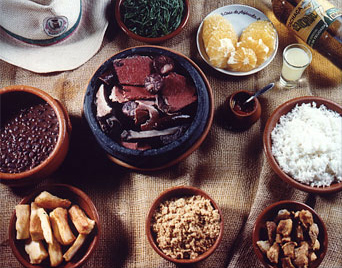
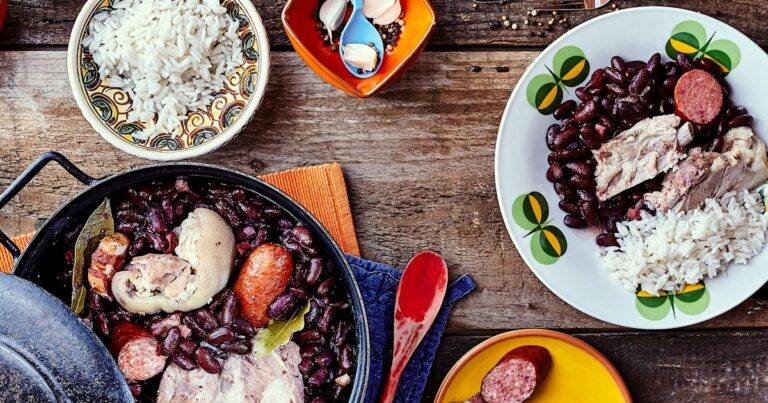
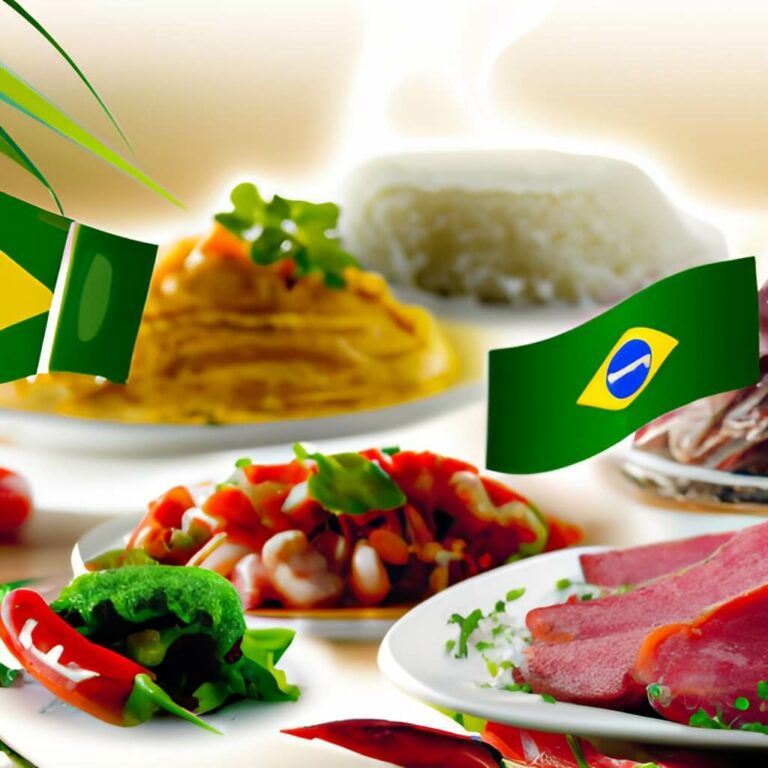
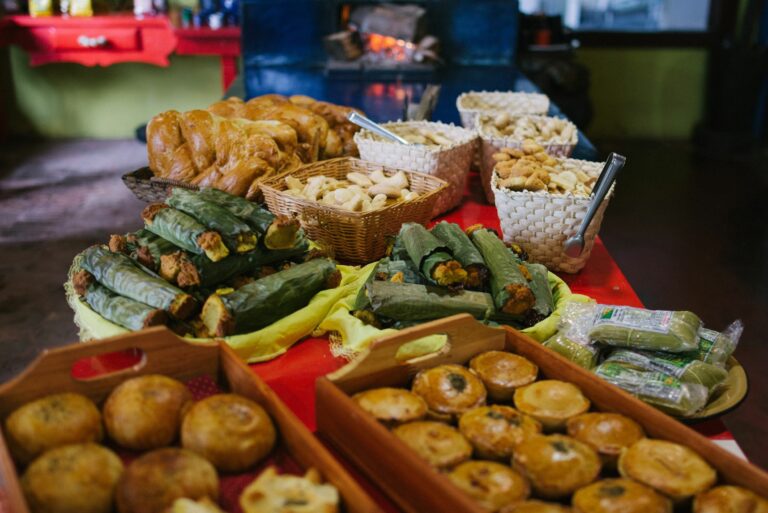

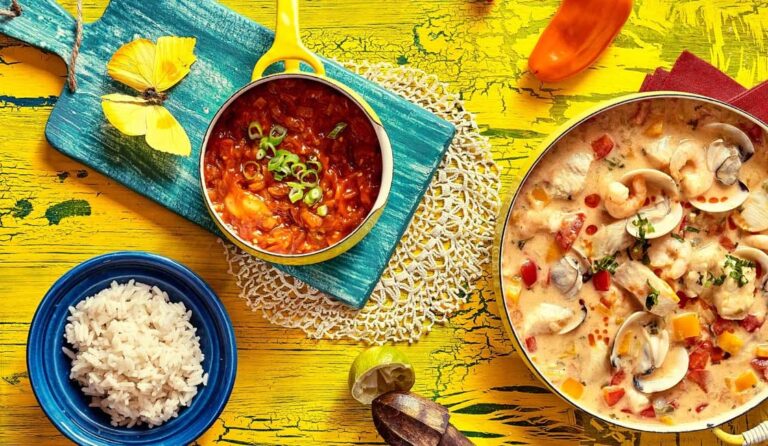

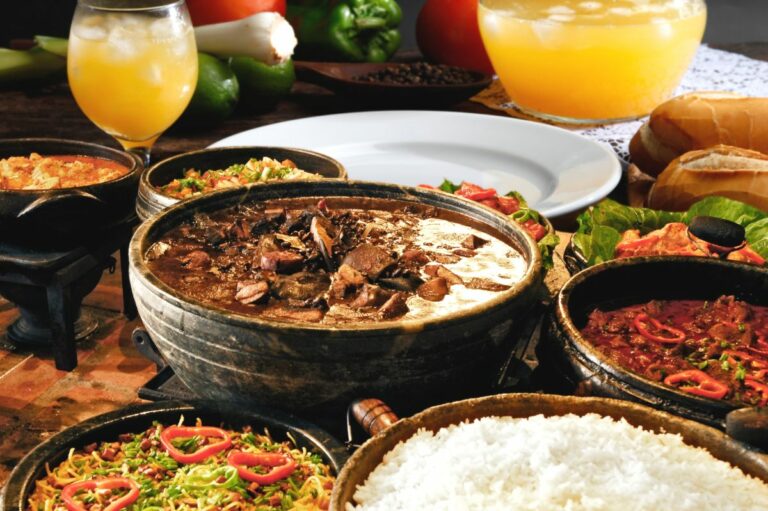
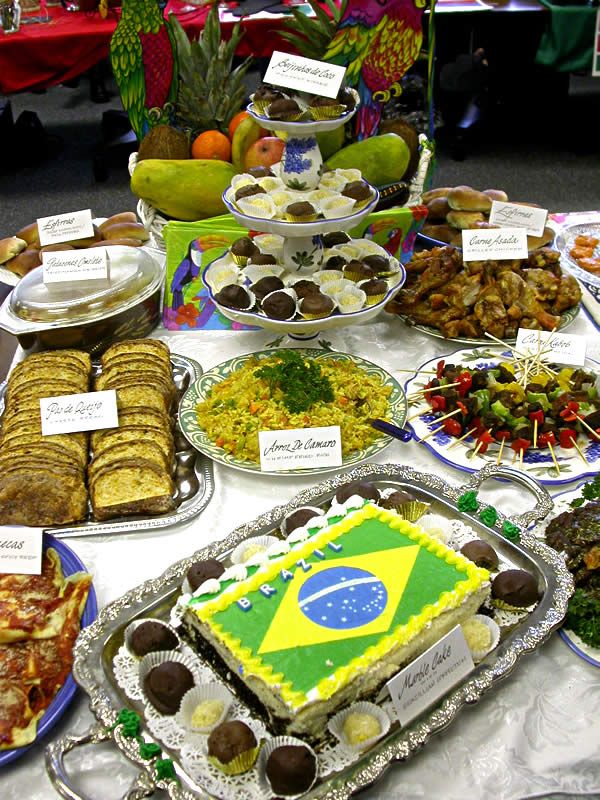
![Can you recommend some Brazilian restaurants in [city]?](https://foodnerdy.com/blog/wp-content/uploads/2023/05/Brazilian_cuisine-768x576.jpg)